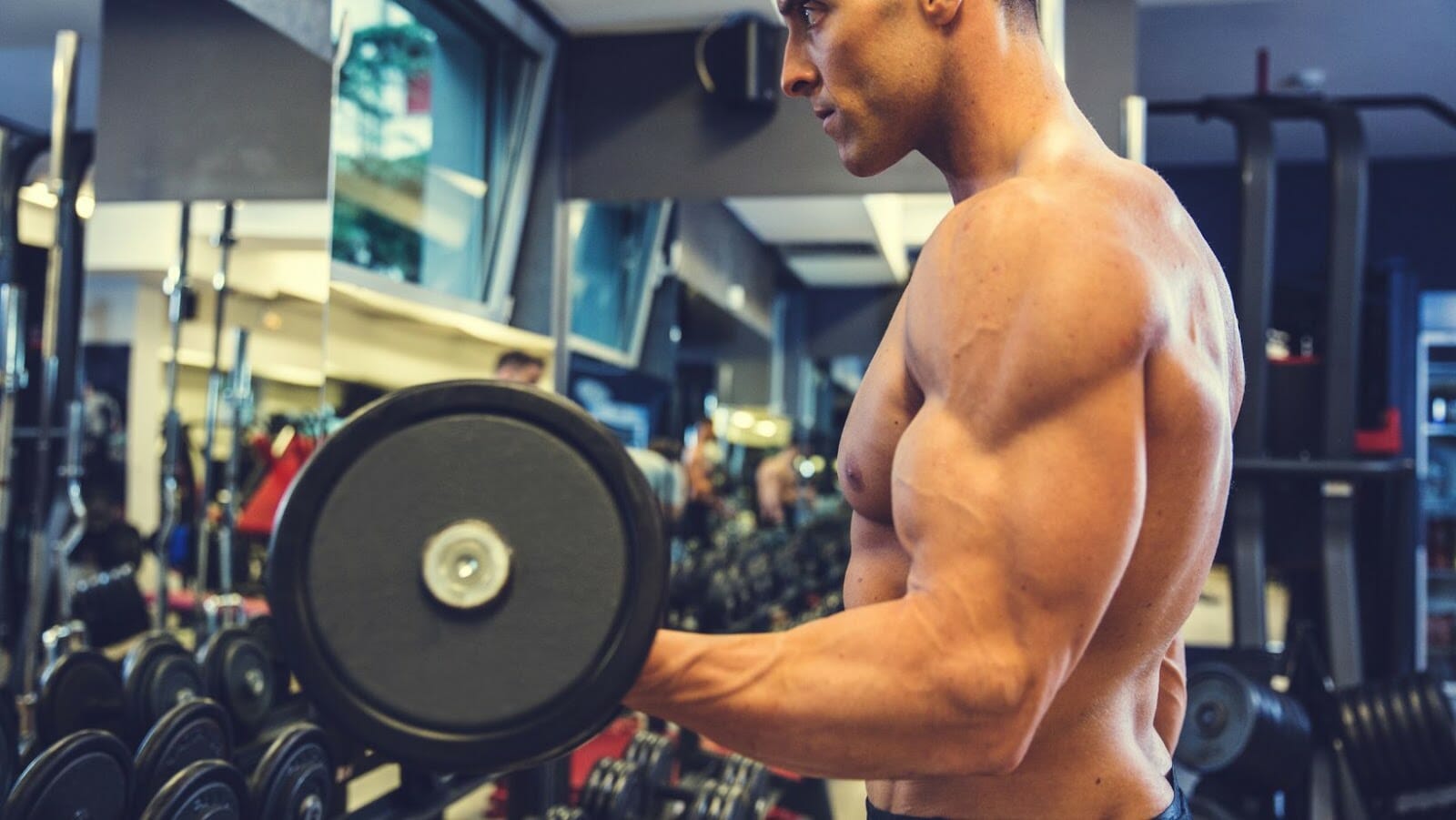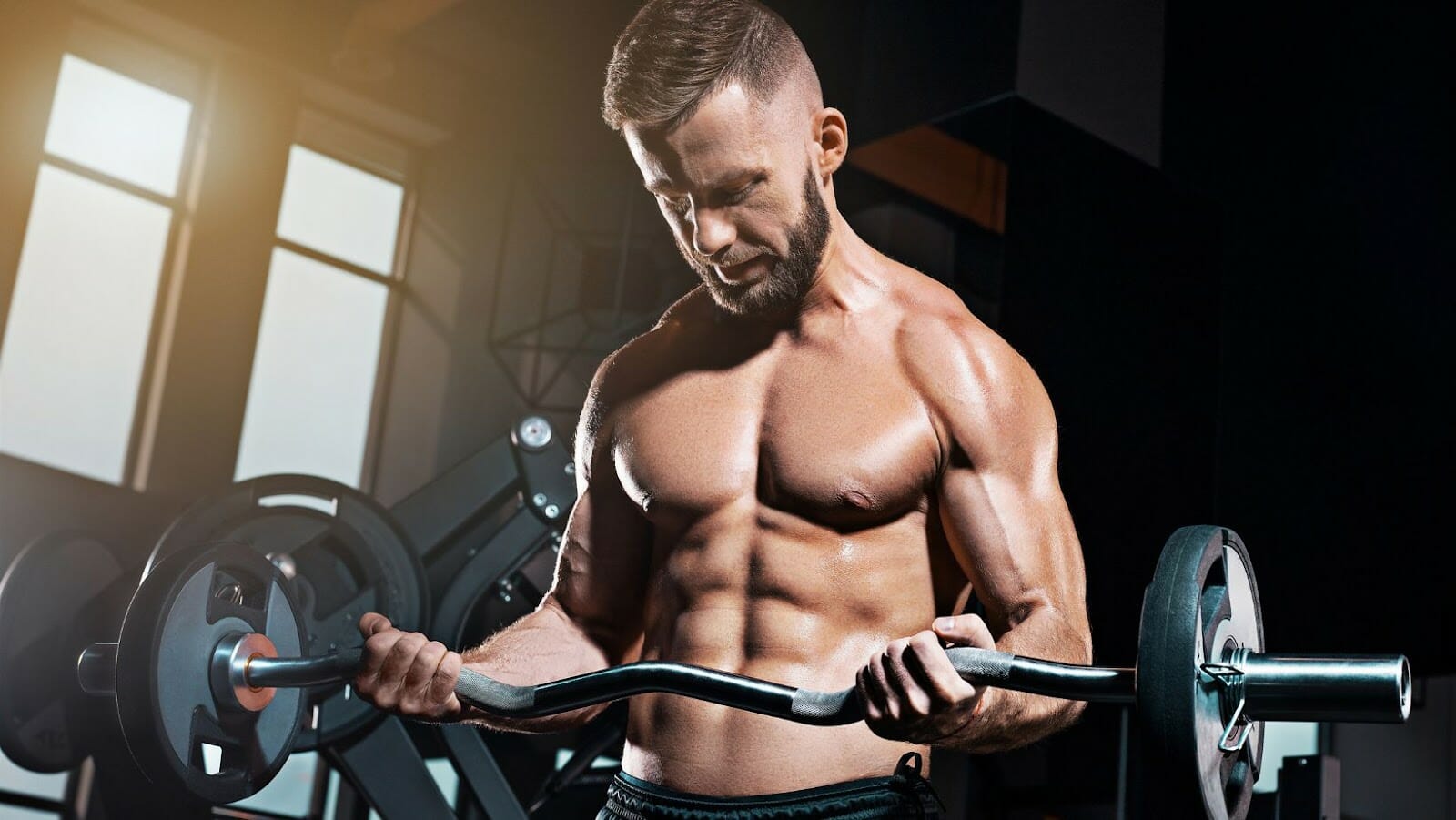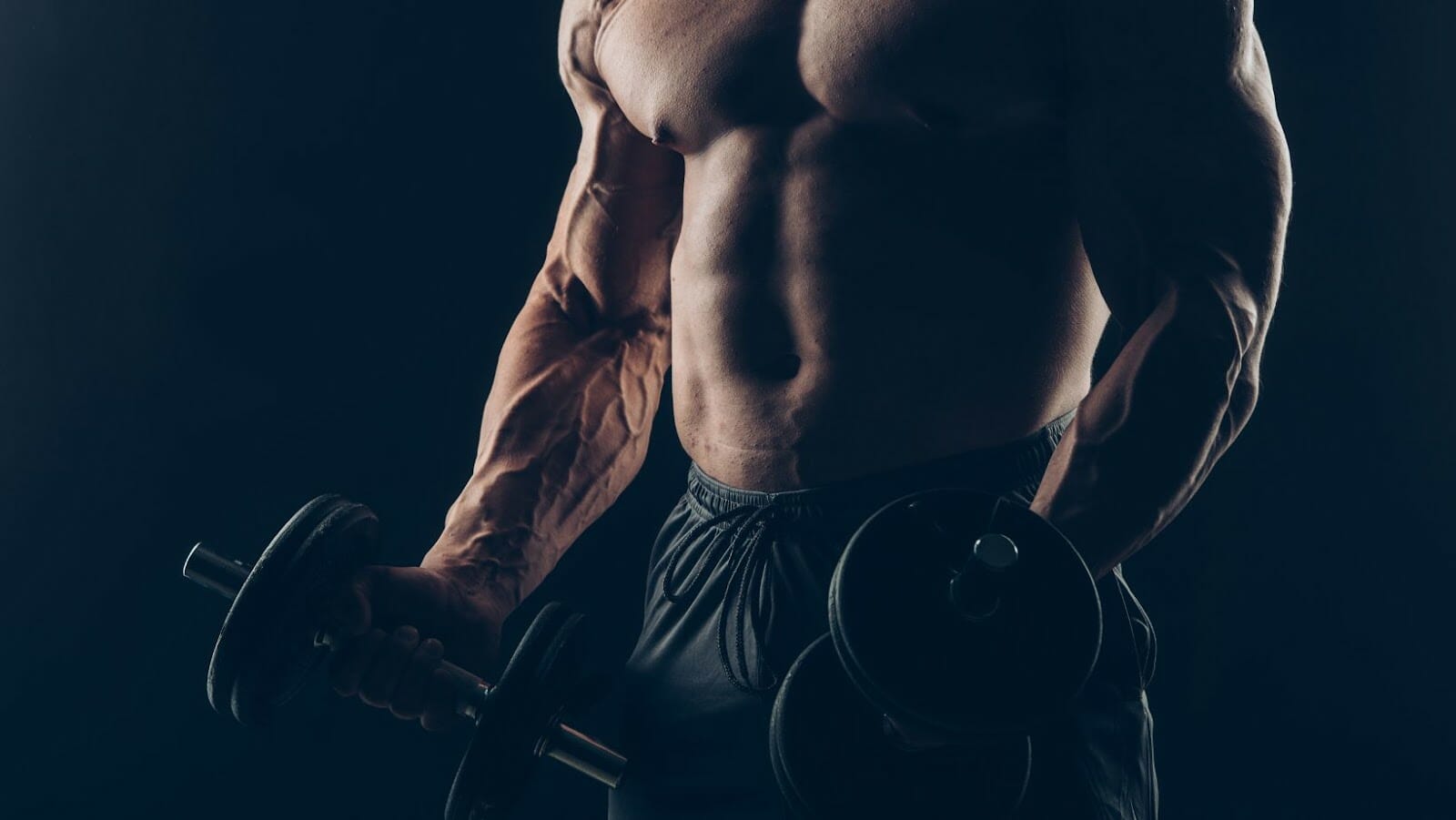Building big biceps and triceps is a common goal for many fitness enthusiasts, and it’s achievable with the right exercises and techniques. Here are some tips on how to effectively build big biceps and triceps:
Chin-ups
Compound
Dips
Compound
Close-grip bench press
Compound
Bicep curls
Isolation
Tricep extensions
Isolation
Progressive overload is essential for muscle growth, so increase weight or reps gradually as your strength improves. Adequate rest and recovery time is also crucial as muscles need time to repair and grow. Additionally, ensure that you eat a balanced diet and get enough protein to support muscle growth.
You can effectively build big biceps and triceps by following these tips consistently over time.
Basic Anatomy of Biceps and Triceps Muscles
When building big biceps and triceps, it is important to understand muscle anatomy and how it works. This article will provide an overview of the anatomy of the biceps and triceps muscles and how they are used in exercises.
The anatomy of the muscles will also be discussed about the exercises used to build strength and size in the arms.
What are Biceps and Triceps?
Biceps and triceps are two of the most well-known and prominent muscles in the body, located in the upper arm area, between the shoulder and elbow joints.
Biceps muscles are at the front of the upper arm, while triceps muscles are at the back part.
To effectively build big biceps and triceps, here are some exercises that you can try:
For Biceps:For Triceps:
1. Standing Barbell Curl 1. Close-Grip Bench Press
2. Dumbbell curls 2. Tricep Dips
3. Seated Alternating Dumbbell Curl 3. Overhead Cable Extension
Consistency and proper form are key to developing bigger biceps and triceps over time. So, start with a lighter weight and gradually increase as you develop strength.
Muscle fiber composition
Muscle fiber composition determines how muscles respond to resistance training exercises, which is crucial in effectively building big biceps and triceps.
There are two main types of muscle fibers: slow-twitch (Type 1) and fast-twitch (Type 2). Slow-twitch muscle fibers contract slowly and have high endurance, making them suited for cardio exercises but not optimal for building muscle mass. On the other hand, fast-twitch muscle fibers contract rapidly and have low endurance.
Biceps and triceps are composed mainly of fast-twitch muscle fibers, which respond best to resistance training exercises using heavy weights and low reps to build bigger and stronger muscles. Incorporate compound exercises like chin-ups, dips, and close-grip bench presses into your workout routine to build big biceps and triceps.
Additionally, maintain a balanced and healthy diet rich in protein to provide the necessary nutrients for muscle growth and repair.
Pro tip
Consistency and patience are key to achieving big biceps and triceps. Ensure your muscles have enough time to rest and recover between workouts to prevent injury and overtraining.
Different types of bicep and tricep exercises
Biceps and triceps are the two crucial muscles in the arm. To effectively build big biceps and triceps, it is important to understand the basic anatomy of these muscles and the different types of exercises that target them.
Bicep ExercisesTricep Exercises
1) Barbell curls 1) Close-grip bench press
2) Hammer curls 2) Tricep pushdowns
3) Preacher curls 3) Tricep dips
4) Concentration curls 4) Overhead tricep extensions
5) Chin-ups 5) Skullcrushers
Performing a combination of these exercises along with maintaining a balanced diet and regular workout routine will help effectively build big biceps and triceps.

Will Biceps Increase With Only 4kg Dumbbells?
Building massive biceps and triceps can be a major goal for many lifters and bodybuilding enthusiasts. You can grow big biceps and triceps mass effectively with the right training and nutrition.
In this article, we’ll cover the different exercises and techniques you can use to help build big biceps and triceps. We’ll also discuss the importance of nutrition and supplementation when building big biceps and triceps.
How often to train biceps and triceps?
Determining how often to train your biceps and triceps depends on various factors such as your fitness goals, recovery time, and workout routine. However, here are some guidelines to follow:
If your goal is to build muscle mass: Train each muscle group at least twice a week, with 48-72 hours of rest between training sessions. Vary your exercises and rep ranges to avoid plateauing.
If your goal is to maintain muscle mass: Train each muscle group once a week, with 72-96 hours of rest between training sessions. Focus on challenging your muscles with heavy weights and low to moderate rep ranges.
If you’re short on time: Combine bicep and tricep exercises into one workout session, training each muscle group 1-2 times a week. This approach allows you to target both muscle groups quickly and effectively.
Importance of Progressive Overload in Bicep and Tricep Training
Progressive overload is a key principle in bicep and tricep training essential for effectively building mass and strength. It refers to gradually increasing the demands placed on the muscles over time to avoid hitting a plateau.
Here are some reasons why progressive overload is crucial:
Prevents AdaptationIncreases StrengthPrevents Plateau
Over time, your muscles adapt to their demands during exercise. Progressive overload ensures that your muscles experience new levels of stress that stimulate growth. Your muscles must adapt to constant increases in resistance to become stronger. Progressive overload helps train your muscles to improve strength. Without progressive overload, your training can stagnate your progress, slowing your muscle growth significantly.
To achieve progressive overload in bicep and tricep training, gradually increase your weights during exercises such as bicep curls or tricep extensions. You can also change the number of sets and reps you perform or switch up your exercises.
Top compound and isolation exercises
When building big biceps and triceps, incorporating compound and isolation exercises into your workout routine is crucial. Compound exercises target multiple muscle groups, while isolation exercises target a specific muscle.
Here are some of the best compound and isolation exercises for building big biceps and triceps mass:
Compound exercises:
1. Barbell curls – This exercise targets the biceps, forearms, and shoulders.
2. Close-grip bench press – This exercise targets the triceps, chest, and shoulders.
3. Chin-ups – This exercise targets the biceps, back, and shoulders.
Isolation exercises:
1. Dumbbell curls – This exercise targets the biceps.
2. Cable tricep pushdowns – This exercise targets the triceps.
3. Hammer curls – This exercise targets both the biceps and forearms.
Combining these exercises into your workout routine can build big biceps and triceps mass.

Nutrition for Building Biceps and Triceps
Nutrition is essential to any workout regimen and especially important when building big biceps and triceps. Eating the right foods at the right times can make all the difference in building muscle and reaching your fitness goals.
Let’s look at nutrition’s role in building muscle and how best to optimize your diet to reach your bodybuilding goals.
Caloric surplus for muscle building
A caloric surplus is essential for gaining muscle mass and building big biceps and triceps. Consuming the right calories can help fuel your workouts and give your body the necessary nutrients to gain muscle.
Here’s how to achieve a caloric surplus:
First, use an online calculator to determine your basal metabolic rate (BMR).
Add the number of calories you burn during exercise to your BMR.
Increase your calorie intake by 10-20% to reach a caloric surplus.
Eat a diet rich in complex carbohydrates, lean protein, and healthy fats to give your body the fuel it needs to gain muscle.
Avoid processed foods, sugary drinks, and unhealthy snacks that can hinder your progress.
Pro tip: Keep a food diary to ensure you consume enough calories and nutrients for muscle building.
Protein intake for muscle growth
Protein is an essential nutrient for muscle growth, and consuming an adequate amount is crucial in building big biceps and triceps. The recommended daily protein intake for muscle growth is about 1 gram per pound of body weight. Protein contains amino acids, the building blocks of muscles, and is necessary for repairing and rebuilding muscle tissue after exercise.
Good protein sources include lean meats, poultry, fish, eggs, dairy products, beans, lentils, nuts, and seeds. Consuming protein with each meal and snack is essential to ensure a steady supply of amino acids for muscle growth throughout the day.
Additionally, consuming protein shortly after exercising can help speed up recovery and promote muscle growth. So, include a protein-rich snack or meal within 30 minutes of exercising.
Pro Tip: Incorporating various protein sources in your diet can supply your body with all essential amino acids, leading to better muscle growth.
Supplements for enhancing bicep and tricep development
While supplements can help support muscle growth and recovery, they should not be relied upon to enhance bicep and tricep development. Instead, consistent strength training and proper nutrition are the most important factors in building big biceps and triceps.
However, if you are looking to supplement your efforts, here are some options:
SupplementBenefits
Creatine
This supplement has been shown to increase muscle strength and size, particularly in combination with resistance training.
Whey Protein
This protein supplement can help support muscle recovery and growth.
Beta-Alanine
This amino acid can help increase muscular endurance, allowing you to perform more reps and sets during workouts.
BCAAs Branched-chain amino acids can help support muscle growth and reduce muscle breakdown during intense exercise.
Ultimately, prioritizing proper nutrition and a consistent strength training routine is key to building big biceps and triceps effectively. Supplements should be used as a complement to these efforts, rather than a substitute.
Recovery
Recovery is essential to any muscle-building routine, especially important for building big biceps and triceps. After an intense workout, giving your body ample time to heal, repair, and replenish is important. With the proper recovery strategies, your hard work can pay off by helping you to achieve your goals in record time.
Let’s explore the best recovery strategies for big biceps and triceps.
Importance of sufficient rest
Sufficient rest is a crucial component of effectively building big biceps and triceps.
You create small tears in the muscle fibers when you train your biceps and triceps. These tears need time to repair and strengthen, so rest is essential. Without adequate rest, your muscles will not have the opportunity to recover and respond to the stress of your workout. In addition, overtraining can lead to muscle fatigue, injury, and decreased performance.
Resting at least 48 hours between bicep and tricep workouts is recommended to allow the muscles to recover fully. Additionally, get enough sleep, eat a balanced diet with plenty of protein, and avoid stress to optimize your recovery.
Pro tip: Consider incorporating active recovery techniques such as light stretching, foam rolling, or yoga to aid muscle recovery and prevent injury.
Stretching and warm-ups
Stretching and warm-up exercises are important for injury prevention and better muscle activation during a workout, leading to effective muscle building.
Before starting your bicep and tricep workout, here are a few warm-up exercises you can try:
Arm circles: Start by holding your arms to the sides and making small circles with your hands. Gradually increase the size of the circles until you’re stretching your arms as far as they can go.
Shoulder rolls: Begin by rolling your shoulders backward, allowing your arms to move with you. Then, roll your shoulders forward in the same motion.
Tricep stretch: Raise your arm above your head and reach your hand to touch the opposite side of your back. Use your other hand to gently press your elbow further toward your head.
Bicep stretch: Extend your arm out in front of you, bend your elbow, and use your other hand to pull the fingertips toward your shoulder. Hold the stretch for 15-30 seconds before switching to the other arm.
Incorporating these exercises into your workout routine can help to improve flexibility, increase circulation, and reduce the risk of injury.
Injury Prevention and management
Building big biceps and triceps requires proper injury prevention and management for optimal results. Overuse of these muscles, performing exercises with incorrect form, and neglecting proper nutrition can lead to serious injury.
Here are some tips for injury prevention and management:
Warm-up properly before your workout to increase blood flow and flexibility of your muscles.
Use proper form during your exercises, and do not sacrifice form for heavier weights.
Use weights that are appropriate for your strength level to avoid overuse injuries.
Incorporate a variety of exercises to prevent muscle imbalances and overuse.
Allow for proper rest and recovery time between workouts.
In case of any injury, seek medical attention and follow proper rehabilitation protocols.
Proper nutrition, including adequate protein intake, can promote muscle recovery and prevent injury.
By incorporating these steps into your workout routine, you can effectively build big biceps and triceps while preventing and managing injuries.

Advanced training techniques
While basic exercises can help you build bigger biceps and triceps, advanced training techniques can take your gains to the next level. These techniques can also be helpful if you’re looking to break plateaus in your training.
In this article, we’ll discuss some of the most effective advanced training techniques for building bigger biceps and triceps and how to incorporate them into your routine.
Supersets, drop sets, and pyramid training
Supersets, drop sets, and pyramid training are advanced training techniques that can effectively help you build big biceps and triceps.
Supersets involve performing two different exercises back-to-back, without rest. For example, for biceps and triceps, one common superset is bicep curls followed by tricep extensions.
Drop sets involve gradually decreasing the weight of your exercise as you reach muscle fatigue, allowing you to push your muscles to their limit. For example, start with a heavy weight for bicep curls, then immediately drop to a lighter weight and continue the curls until failure.
Pyramid training involves gradually increasing the weight of your exercise while decreasing the number of repetitions, then doing the opposite (decreasing the weight while increasing the reps). This technique helps build strength and endurance.
Incorporating these advanced training techniques into your routine can help challenge your muscles in new ways, breaking through plateaus and achieving more significant gains in your biceps and triceps. Pro Tip: It’s always a good idea to consult a personal trainer before attempting advanced training techniques to ensure proper form and reduce the risk of injury.
The myth of muscle confusion
Many people believe in the concept of muscle confusion, which suggests that varying your workouts frequently can promote muscle growth. However, this concept is a myth, and little scientific evidence supports it.
To effectively build big biceps and triceps, you must focus on the basics, such as compound exercises, progressive overload, and sufficient rest and recovery. Compound exercises, like push-ups and pull-ups, work multiple muscle groups simultaneously, leading to more significant gains in muscle mass. Progressive overload means gradually increasing the weight or resistance you use in your exercises to challenge your muscles continually. Finally, adequate rest and recovery allow your muscles to repair and grow after a workout.
So, instead of worrying about constantly confusing your muscles with new exercises or routines, focus on consistent, challenging workouts that incorporate muscle-building basics.



